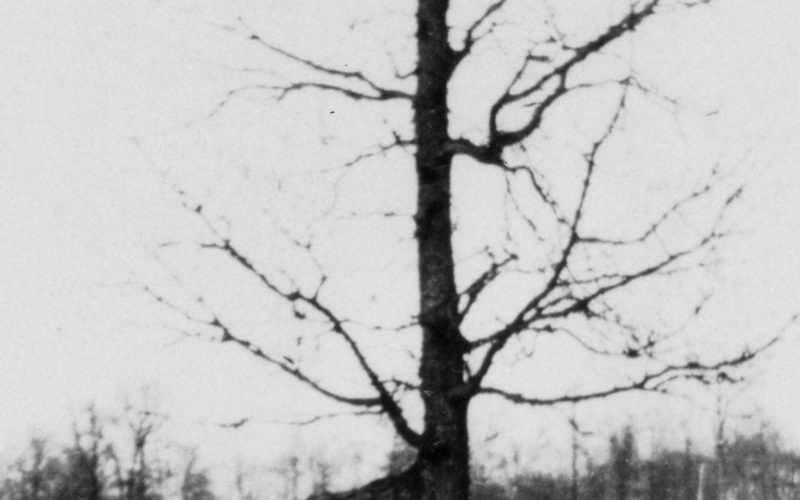
Courtesy Photo
A photo from the 1880s of a marker tree in the Illinois Lakes region.
Bent trees have a strange way of attracting attention like bigfoot. Cryptozoology is the pseudoscience study of creatures that many exist but show no scientifically validated proof of existing (except in certain cases like the mountain gorilla). To some, “signal trees,” “Indian marker trees” or “Native American trail trees” are in the category of cryptoforestry. These trees are said to have been intentionally bent by tribes marking significant features or paths.
Because they have been studied, there are certain facts we do know scattered among the legends: some trees were oddly shaped by nature, some were shaped by humans, and it’s difficult to determine the difference. Trees can be damaged by storms, weighed down by ice, or a fallen tree can misshape a sapling, causing it to look like a marker once it’s grown. The real mystery is not whether any signal trees exist, but which trees are authentic and which are not, and why each of these trees was made in the first place.
There is a rigorous set of requirements that a potential trail tree must meet for it to be determined that humans, not nature, deformed it. The sometimes lengthy process involves arborists, archaeologists, historians, anthropologists, and tribal elders. Of the hundreds of potential trail trees found, only a handful have been officially recognized. These requirements vary slightly, depending on the organization confirming the trees, but in summary:
1. The species must be a native, usually a hardwood like white oak, elm, or maple because these are flexible as saplings and long-lived (trees should be dated to be 150 – 200 years old at least). Size does not indicate age – there are small trees on Mt. Kessler dated to be hundreds of years old!
2. The bend should be a traditional shape. Different tribes used different shapes, but the tree also needs to point to a significant location (historical or modern) or path. Scars or embedded objects may be present showing how the tree was bent by human intervention.
3. Oral tradition and historical documentation or archaeological records of something relevant, such as former clusters of bent trees near a potential trail tree, must exist.
Dendrochronology can determine when a tree was bent, proving useful when combined with records of known indigenous camps, trails, water sources, oral histories from tribal elders, and documented events. In recent decades researchers have taken a more scientific approach to the study of signal trees as well as collaborating closely with Native American organizations and volunteer groups such as the Texas Historic Tree Coalition, the Great Lakes Trail Marker Tree Society, and Georgia-based Mountain Stewards which documented several potential trail trees at our local Hobbs State Park.
To learn more, read “Native American Trail Marker Trees” by Dennis Downes, or “Mystery of the Trees” by Don and Diane Wells with Dr. John Nardo, Robert Wells and Lamar Marshall. Or check out the recent Only in Arkansas article “Arkansas Signal Trees” by Kimberly Mitchell for more fascinating details on trail trees near you.
Amanda Bancroft is a Master Naturalist and volunteers with her husband Ryan for their solar-powered online educational center on how to make a difference with everyday choices at: www.RipplesBlog.org.










